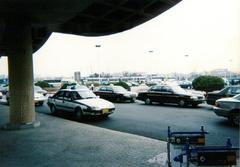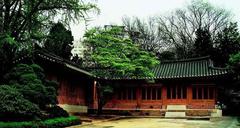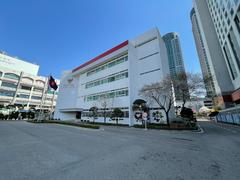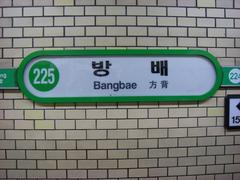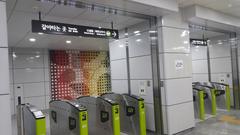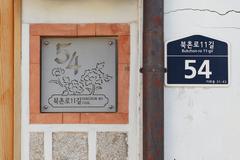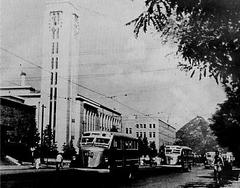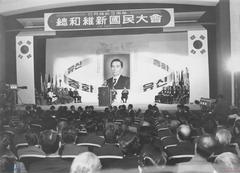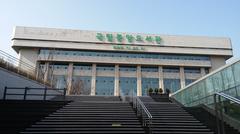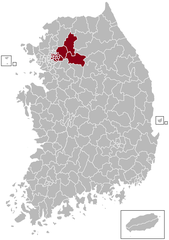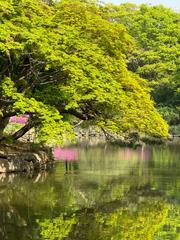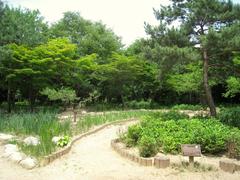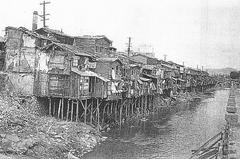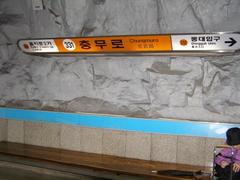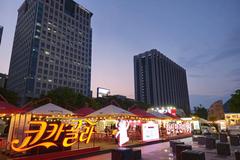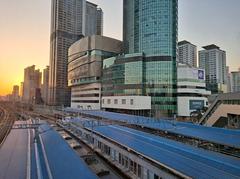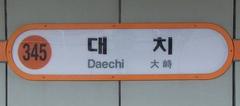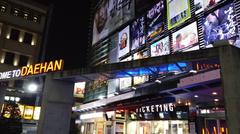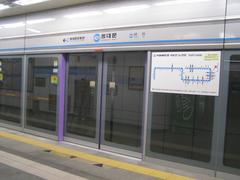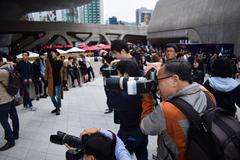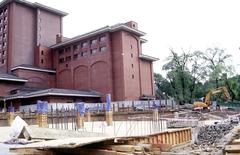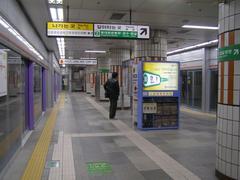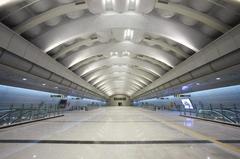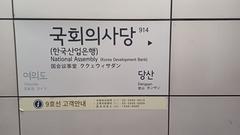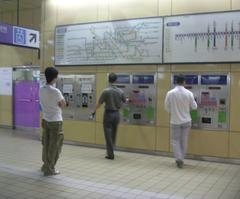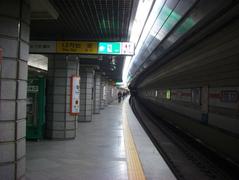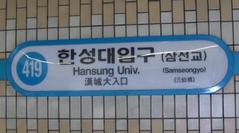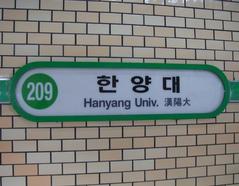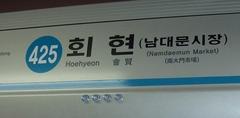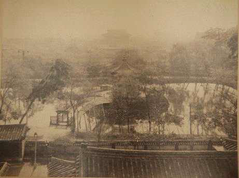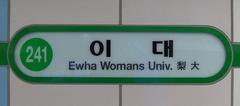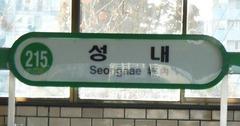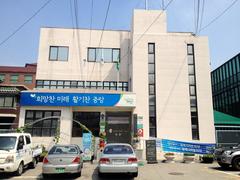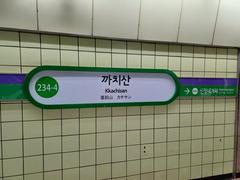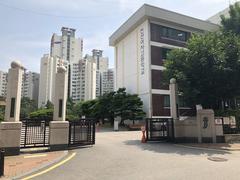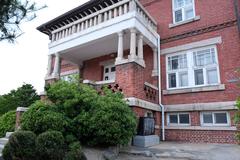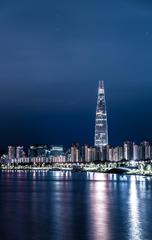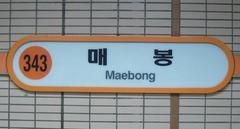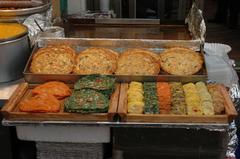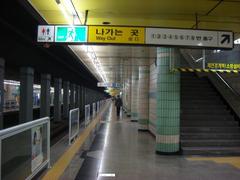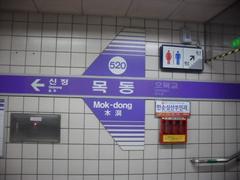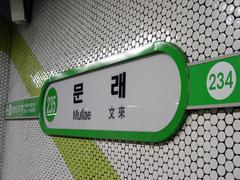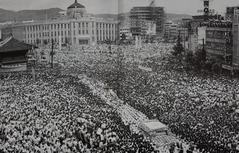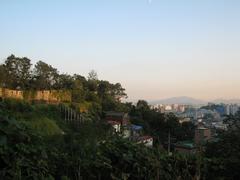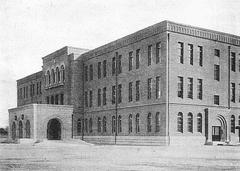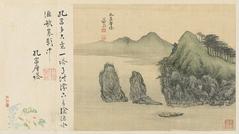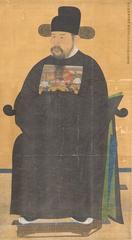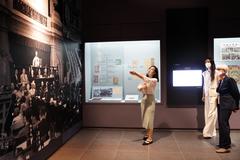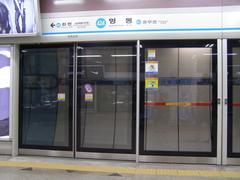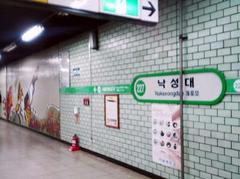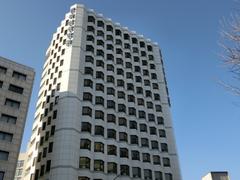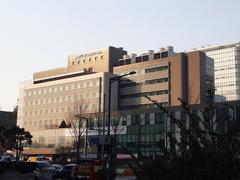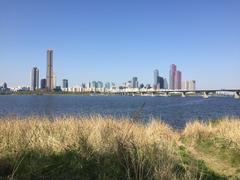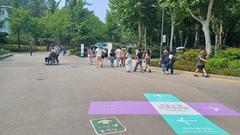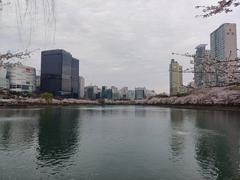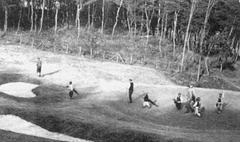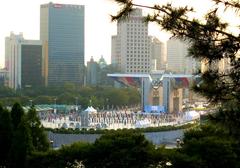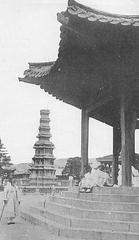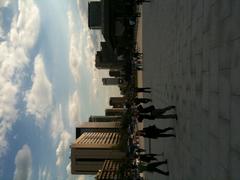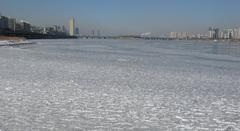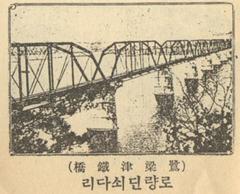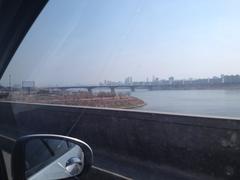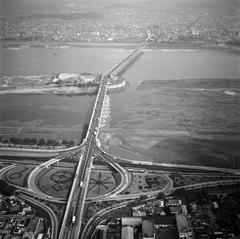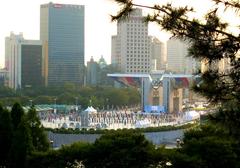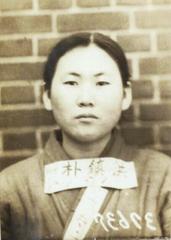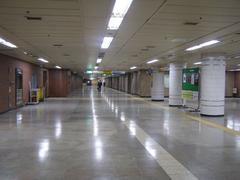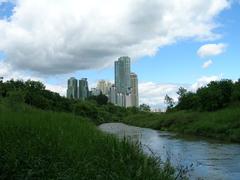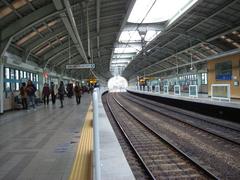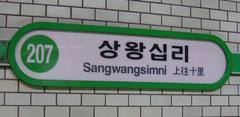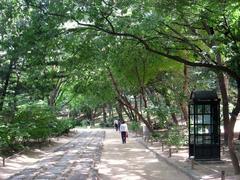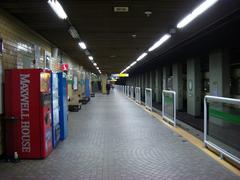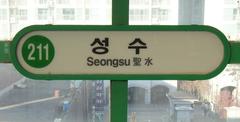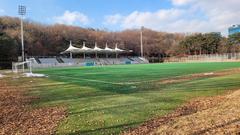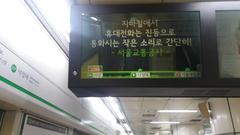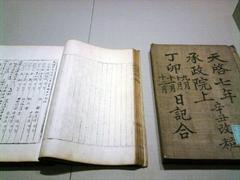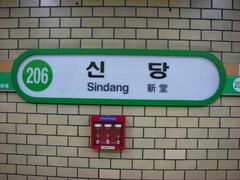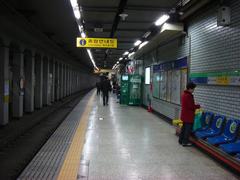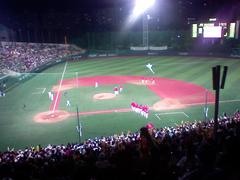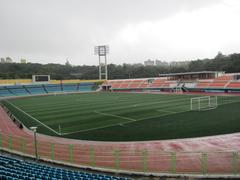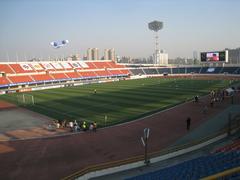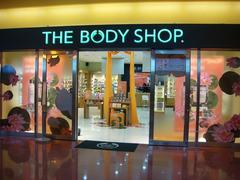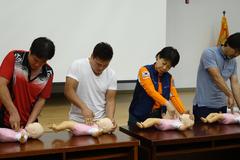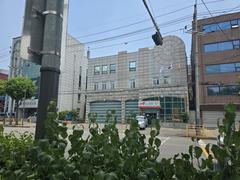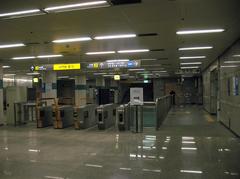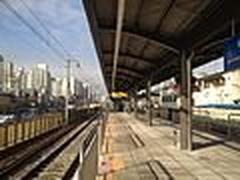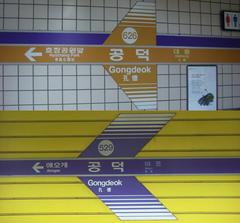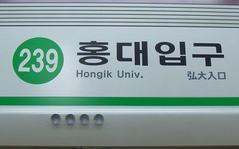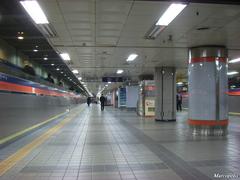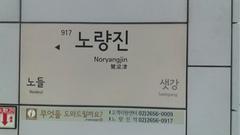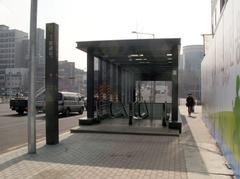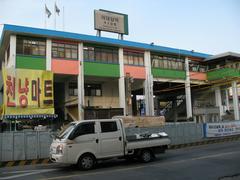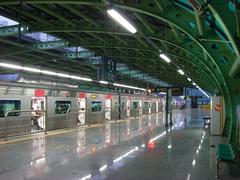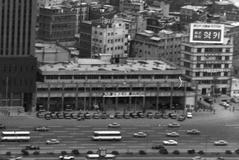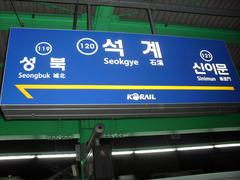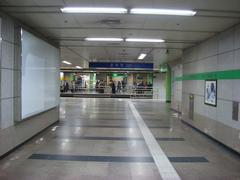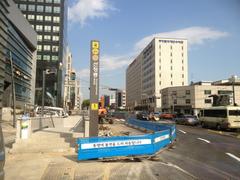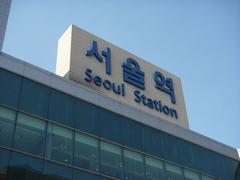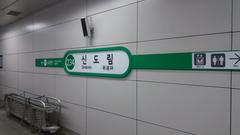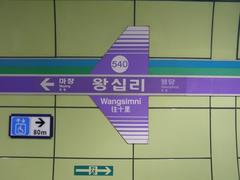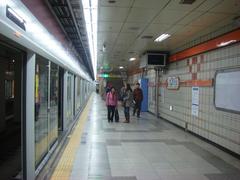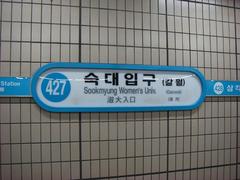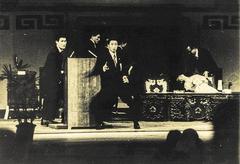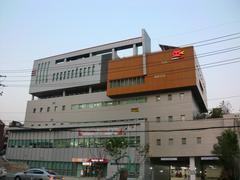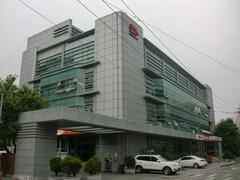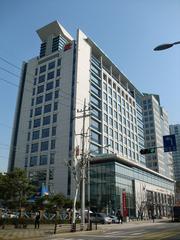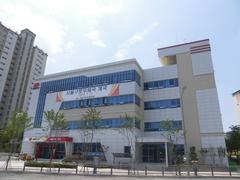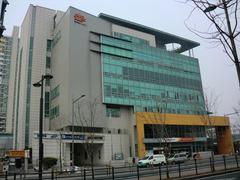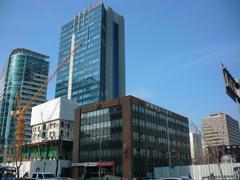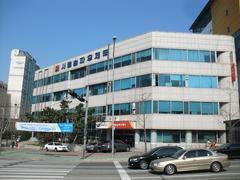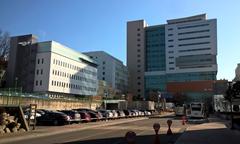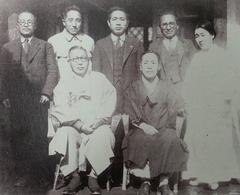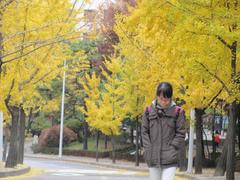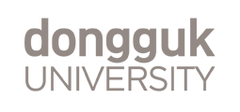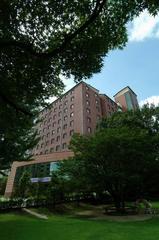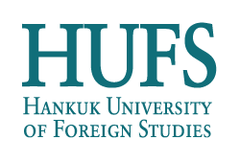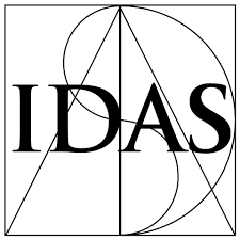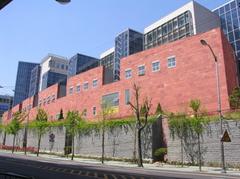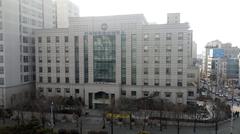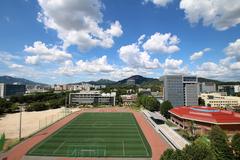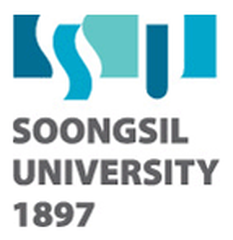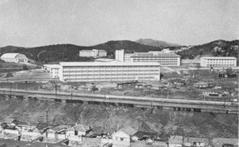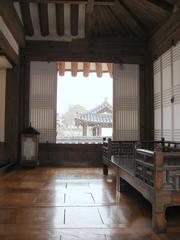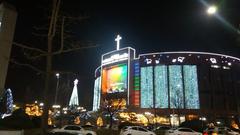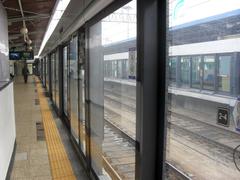Comprehensive Guide to 보국문로 in Seoul, South Korea
Publication Date: 18/07/2024
Introduction to 보국문로
Table of Contents
- [Exploring Bogukmun-ro - A Historical Journey through Seoul’s Ancient Pathway]
- [Explore Bogukmun-ro - Visiting Hours, Tickets, and Top Attractions in Seoul’s Historical Hub]
- [Ultimate Guide to Visiting Bogukmun-ro - Best Times, Tickets, Trails & Tips]
- [Summary and Final Thoughts]
- [References]
Exploring Bogukmun-ro - A Historical Journey through Seoul’s Ancient Pathway
Historical Background and Significance of Bogukmun-ro
Bogukmun-ro (보국문로) in Seoul, South Korea, is more than just a road; it’s a journey through time, reflecting the city’s rich history and cultural heritage. Nestled along the slopes of Bugaksan Mountain, this historic pathway offers a glimpse into Seoul’s past, particularly its Joseon Dynasty (1392-1910) legacy.
The Fortifications of the Joseon Dynasty
Bogukmun-ro derives its name from Bogukmun Gate (보국문), one of the four small gates along Seoul’s ancient fortress wall. This wall, built in the 15th century under King Taejo, the founder of the Joseon Dynasty, served as a crucial defense line for the capital city, Hanyang (present-day Seoul).
The fortress wall, stretching for 18.2 kilometers around the city, featured eight gates, including four large gates and four small gates. Bogukmun, meaning “Gate Protecting the Country,” served as a vital access point on the north side of the wall.
A Road Steeped in History
Bogukmun-ro, running adjacent to the fortress wall, became a significant pathway for both defense and everyday life. During the Joseon era, soldiers patrolled the wall, utilizing Bogukmun-ro for access and surveillance. The road also facilitated the movement of people and goods through the mountainous terrain.
The Impact of Conflict and Modernization
Over the centuries, Bogukmun-ro, like Seoul itself, witnessed periods of both peace and turmoil. The Imjin War (1592-1598), a Japanese invasion of Korea, saw significant damage to the fortress wall, including Bogukmun Gate. While the gate underwent reconstruction in the 18th century, the scars of conflict remained etched in the landscape.
The late 19th and early 20th centuries brought about rapid modernization and urban development, impacting Bogukmun-ro’s character. As Seoul expanded, the road adapted to accommodate changing transportation needs.
Bogukmun-ro Today - A Cultural and Scenic Corridor
Today, Bogukmun-ro stands as a testament to Seoul’s resilience and evolving identity. The road, while modernized, retains its historical charm, offering visitors a unique perspective on the city’s past.
Reasons to Visit Bogukmun-ro
- Historical Significance - Walking along Bogukmun-ro is akin to stepping back in time. The road’s proximity to the fortress wall, with its preserved sections and restored gates, provides a tangible connection to the Joseon Dynasty.
- Scenic Beauty - Bogukmun-ro winds its way through the foothills of Bugaksan Mountain, offering breathtaking views of the surrounding landscape. The blend of natural beauty and historical remnants creates a truly captivating atmosphere.
- Cultural Immersion - The area surrounding Bogukmun-ro is home to several cultural attractions, including temples, museums, and traditional villages. These sites provide insights into Korean art, architecture, and way of life.
Exploring Bogukmun-ro - Tips for Visitors
To make the most of your visit to Bogukmun-ro, consider these tips:
- Visiting Hours - Typically, Bogukmun-ro is accessible year-round, but check local guidelines for specific visiting hours.
- Tickets - There is no specific ticket required to access Bogukmun-ro, but some nearby attractions might have entry fees.
- Wear Comfortable Shoes - The road involves some uphill walking, so comfortable footwear is essential.
- Allow Ample Time - Exploring Bogukmun-ro and its surrounding attractions can easily take half a day or more.
- Bring Water and Snacks - While there are cafes and restaurants in the area, it’s a good idea to have refreshments on hand, especially if you plan on hiking.
- Check for Any Access Restrictions - Parts of the fortress wall and surrounding areas may have restricted access due to preservation efforts. Check for updates before your visit.
- Learn Basic Korean Phrases - While English is spoken in tourist areas, knowing a few basic Korean phrases can enhance your interactions with locals.
Nearby Attractions
- Gyeongbokgung Palace - A short distance from Bogukmun-ro, this grand palace offers fascinating insights into the royal history of the Joseon Dynasty.
- Bukchon Hanok Village - Explore this traditional Korean village to see beautifully preserved hanoks (traditional Korean houses).
- Changdeokgung Palace - Known for its secret garden, this palace is a UNESCO World Heritage site and offers guided tours.
Special Events and Photographic Spots
- Seasonal Festivals - Check for any local festivals or events that might coincide with your visit to add a cultural experience.
- Photographic Spots - The scenic views along Bogukmun-ro, especially during sunrise or sunset, offer stunning photographic opportunities.
Explore Bogukmun-ro - Visiting Hours, Tickets, and Top Attractions in Seoul’s Historical Hub
Bogukmun-ro, nestled in Seoul’s Seongbuk-gu district, offers a captivating blend of history, nature, and culture. This scenic road, stretching along the fortress wall of Bukhansan National Park, is a treasure trove of attractions for visitors seeking to delve into Seoul’s rich heritage and natural beauty.
Top Attractions along Bogukmun-ro
1. Seoul City Wall (Bukhansan Section)
The Seoul City Wall, a UNESCO World Heritage Site, is one of the most iconic landmarks in Seoul. Bogukmun-ro runs alongside a particularly picturesque section of the wall that snakes its way through the breathtaking landscape of Bukhansan National Park.
- History - Originally constructed in the 14th century during the Joseon Dynasty, the wall served as a defensive barrier for the city. The section along Bogukmun-ro showcases the architectural prowess of the era, with its impressive stonework and strategic design.
- Highlights - Hiking along the wall offers stunning panoramic views of the city and the surrounding mountains. The trail is well-maintained and suitable for various fitness levels, with sections for leisurely walks and more challenging climbs.
- Visitor Information:
- Visiting Hours - Open daily from 9 AM to 6 PM.
- Tickets - Free entry.
- Tips - Wear comfortable shoes suitable for hiking. Be prepared for changing weather conditions, as the mountain terrain can be unpredictable.
2. Bogukmun Gate (North Gate)
Standing majestically at the northernmost point of the Seoul City Wall, Bogukmun Gate, also known as the North Gate, is one of the Eight Gates of Seoul.
- History - Built in 1413, Bogukmun Gate holds significant historical importance. It was once a vital gateway for travelers and merchants entering and exiting the capital from the north. The gate’s two-story wooden pavilion is a beautiful example of traditional Korean architecture.
- Significance - Bogukmun Gate symbolizes protection and strength. Its strategic location on a steep slope made it a formidable defensive structure. Today, it stands as a reminder of Seoul’s rich history and architectural heritage.
- Visitor Information:
- Visiting Hours - Open 24 hours.
- Tickets - Free entry.
- Tips - Combine a visit to Bogukmun Gate with a hike along the adjacent Seoul City Wall for a comprehensive historical experience.
3. Bukhansan National Park
Encompassing a sprawling mountainous area north of Seoul, Bukhansan National Park is a haven for nature enthusiasts and outdoor adventurers. Bogukmun-ro provides access to some of the park’s most popular trails and scenic spots.
- Natural Beauty - The park is renowned for its granite peaks, lush valleys, cascading waterfalls, and serene temples. It offers a welcome escape from the bustling city, allowing visitors to reconnect with nature.
- Hiking Trails - Bukhansan National Park boasts a network of hiking trails catering to all levels, from beginner-friendly paths to challenging climbs for experienced hikers.
- Popular Peaks - Some of the most popular peaks accessible from Bogukmun-ro include Baegundae Peak, the highest peak in the park, and Insubong Peak, known for its unique rock formations.
- Visitor Information:
- Opening Hours - Open daily from 4 AM to 10 PM.
- Tickets - Free entry.
- Tips - Check the weather forecast before heading out, as conditions can change rapidly in the mountains. Wear appropriate hiking gear and bring plenty of water and snacks.
4. Jeongneung Royal Tomb
Located on the slopes of Bukhansan Mountain, Jeongneung is the tomb of Queen Jeonghui, the consort of King Taejo, the founder of the Joseon Dynasty.
- Historical Significance - Jeongneung is one of the Royal Tombs of the Joseon Dynasty, a UNESCO World Heritage Site. It offers a glimpse into the funerary rituals and architectural styles of the Joseon period.
- Architectural Features - The tomb complex features a series of structures, including a red gate, a T-shaped shrine, and the burial mound itself. The intricate carvings and serene atmosphere create a sense of reverence and historical grandeur.
- Visitor Information:
- Visiting Hours - Open daily from 9 AM to 6 PM.
- Tickets - Adults: 1,000 KRW, Children: 500 KRW.
- Tips - Allow ample time to explore the tomb complex and appreciate its historical and architectural significance. Guided tours are available for those seeking a deeper understanding of the site.
5. Wui-dong Valley
Wui-dong Valley, situated at the base of Bukhansan Mountain, is a picturesque valley known for its natural beauty and tranquil atmosphere.
- Scenic Hiking Trails - The valley offers a network of well-maintained hiking trails that wind alongside a babbling stream. The trails are relatively easy, making it an ideal spot for a leisurely stroll or a family outing.
- Seasonal Beauty - Wui-dong Valley is particularly stunning during the autumn foliage season when the leaves transform into vibrant hues of red, orange, and yellow.
- Visitor Information:
- Visiting Hours - Open daily from 6 AM to 8 PM.
- Tickets - Free entry.
- Tips - Combine a visit to Wui-dong Valley with a hike to nearby attractions like Jeongneung Royal Tomb or the Seoul City Wall for a fulfilling day trip.
6. Traditional Korean Restaurants and Tea Houses
Bogukmun-ro is dotted with charming traditional Korean restaurants and tea houses, offering visitors a taste of authentic Korean cuisine and culture.
- Culinary Delights - Sample local delicacies like bibimbap (mixed rice with vegetables and meat), pajeon (savory pancakes), and tteokbokki (spicy rice cakes).
- Traditional Tea Houses - Experience the tranquility of a traditional Korean tea house and savor a cup of aromatic tea while enjoying the serene surroundings.
- Visitor Information:
- Opening Hours - Varies by establishment, typically 10 AM to 10 PM.
- Tips - Look for restaurants and tea houses with outdoor seating areas for a more immersive experience.
7. Art Galleries and Craft Shops
For art enthusiasts, Bogukmun-ro offers a selection of art galleries and craft shops showcasing the talents of local artists and artisans.
- Local Art Scene - Discover unique pieces of art, including paintings, ceramics, and sculptures, reflecting the creativity and cultural heritage of the area.
- Handicrafts and Souvenirs - Find one-of-a-kind souvenirs and handcrafted items to take home as a reminder of your trip to Seoul.
- Visitor Information:
- Opening Hours - Varies by establishment, typically 11 AM to 8 PM.
- Tips - Check the operating hours of the galleries and shops in advance, as they may vary.
8. Accommodation Options
Bogukmun-ro offers a range of accommodation options to suit different preferences and budgets.
- Guesthouses - Experience the warmth of Korean hospitality at cozy guesthouses, offering an affordable and authentic stay.
- Boutique Hotels - Indulge in a more luxurious experience at stylish boutique hotels, providing modern amenities and personalized service.
- Visitor Information:
- Booking Tips - Book your accommodation in advance, especially during peak season, to secure your preferred choice.
Additional Information
Special Events and Guided Tours
- Special Events - Throughout the year, Bogukmun-ro hosts various cultural festivals and events, celebrating traditional Korean heritage. Check local listings for upcoming events during your visit.
- Guided Tours - Several tour operators offer guided tours of Bogukmun-ro, providing in-depth historical insights and convenient access to multiple attractions.
Photographic Spots
- Photographic Spots - Capture the scenic beauty of Bogukmun-ro at designated viewpoints along the Seoul City Wall, Bogukmun Gate, and Wui-dong Valley. Early morning and late afternoon provide the best lighting for photography.
Ultimate Guide to Visiting Bogukmun-ro - Best Times, Tickets, Trails & Tips
Introduction
Bogukmun-ro, a hidden gem in Seoul, offers a unique blend of history, nature, and adventure. This guide will provide you with essential information on visiting hours, tickets, trails, and tips to help you make the most of your trip.
History and Cultural Significance
Bogukmun-ro is steeped in history, with the Bogukmun Gate (북문) being one of the original gates of the Bukhansanseong Fortress, built in 1711 to protect Seoul. The area is dotted with serene Buddhist temples and historical landmarks, making it a culturally significant site.
Best Time to Visit
- Spring (April-May) and Autumn (September-October) - These seasons offer the most pleasant weather for hiking and enjoying the vibrant foliage. Spring brings cherry blossoms, while autumn paints the mountainsides in fiery hues.
- Summer (June-August) - While hot and humid, summer offers a chance to escape the city heat and enjoy the lush greenery. Be prepared for occasional rainfall.
- Winter (November-March) - Though cold, winter transforms the landscape into a snowy wonderland, offering breathtaking views and opportunities for winter sports.
Getting There
- Subway:
- Line 3 - Get off at Gupabal Station (Exit 1). The entrance to Bukhansan National Park is a short walk from the station.
- Bus:
- Several buses stop near the entrance of Bukhansan National Park. Check the Seoul bus routes for the most convenient option.
- Taxi:
- Taxis are readily available throughout Seoul. Be sure to have the destination written in Korean for the driver.
Navigating Bogukmun-ro
- Bukhansan National Park Trails - Bogukmun-ro is part of Bukhansan National Park, offering numerous hiking trails for all levels:
- Popular Trails:
- Bogukmun Trail - This challenging but rewarding trail leads to the peak of Bogukbong Peak.
- Daeseongmun Trail - A more gradual ascent with stunning views of the surrounding mountains.
- Bukhansanseong Fortress Wall Trail - Hike along the historic fortress wall for panoramic city views.
- Popular Trails:
- Maps and Information:
- Pick up a free map at the park entrance or visitor center.
- Information boards with trail maps and difficulty levels are located throughout the park.
Essential Tips for a Memorable Experience
- Hiking Gear:
- Wear comfortable hiking shoes with good traction.
- Dress in layers as the weather can change quickly in the mountains.
- Bring a backpack with water, snacks, and sunscreen.
- Safety:
- Stay on marked trails and follow park regulations.
- Be aware of wildlife and keep a safe distance.
- Inform someone about your hiking plans and expected return time.
- Food and Drinks:
- Pack your own food and drinks as there are limited options within the park.
- Several restaurants and cafes are located near the park entrances.
- Respectful Tourism:
- Help preserve the natural beauty by packing out all trash.
- Be mindful of noise levels and avoid disturbing other visitors.
Exploring Beyond the Trails
While hiking is the main attraction, Bogukmun-ro offers more than just trails:
- Bogukmun Gate (북문) - This historic gate is one of the original gates of the Bukhansanseong Fortress.
- Bukhansanseong Fortress - Explore the remnants of this ancient fortress wall, built in 1711 to protect Seoul.
- Temples - Discover serene Buddhist temples nestled in the mountains, offering a glimpse into Korean spirituality.
- Scenic Views - Capture breathtaking panoramic views of Seoul’s cityscape from various points along the trails.
Special Events and Guided Tours
Bogukmun-ro often hosts special events and guided tours that provide deeper insights into its history and natural beauty. Check the official website or visitor center for the latest information on these events.
Photographic Spots
Some of the best spots for photography include the Bogukmun Gate, the peaks of the trails, and the scenic viewpoints along the fortress wall. Don’t forget to bring your camera to capture the stunning landscapes and historical landmarks.
Accommodation
- Within the Park:
- Bukhansan National Park offers camping facilities for those seeking an immersive nature experience. Reservations are recommended, especially during peak season.
- Near the Park:
- Numerous guesthouses and hotels are available in the nearby neighborhoods, providing easy access to the park entrance.
Combining Your Visit
- Bukchon Hanok Village - Explore the charming traditional Korean houses in this well-preserved village, located near the park.
- Gyeongbokgung Palace - Visit Seoul’s largest and most stunning royal palace, a short distance from Bukhansan National Park.
- Insadong District - Discover traditional crafts, tea houses, and art galleries in this vibrant cultural district.
FAQ
Q - What are the visiting hours for Bogukmun-ro?
A - The visiting hours for Bogukmun-ro align with Bukhansan National Park hours. Generally, the park is open from early morning until sunset, but it’s best to check the official website for seasonal variations.
Q - Do I need a ticket to enter Bogukmun-ro?
A - There is no entrance fee for Bogukmun-ro itself, but certain events or guided tours may require tickets. Check the official website for more details.
Q - Are there guided tours available?
A - Yes, guided tours are available and can offer insightful information about the history and natural beauty of the area. Check with the visitor center for schedules and availability.
Conclusion
Bogukmun-ro offers a unique blend of history, nature, and adventure. By following these tips and guidelines, you can ensure a safe, enjoyable, and memorable experience exploring this scenic destination in Seoul. Don’t forget to download the mobile app Audiala, check out other related posts, and follow us on social media for more updates.

